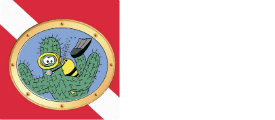Liveaboard Diving Palau
Where Is Palau and Why Should You Go?
Nestled deep in the pacific triangle, Palau is known for many splendid factors. World War II wrecks and the famed jellyfish lake are perennial favourites among visitors, yet the 200 islands that make up Palau are home to a rich biodiversity of life such as big schools of fish, and both macro and mega fauna that will defy imagination.
600 km southeast of the Philippines, Palau is a passing area for many pacific species. There are 1500 species of fish and 700 species coral that have been recorded in the area, making the islands one of the richest concentration of marine species in the entire world.
When To Go?
The flexibility of spending your time diving form a liveaboard is un-matched. The 200 islands are impossible to visit without diving from the yacht, and divers can experience the best of shallow sites, deep walls, wrecks and much more.
Palau’s liveaboards operate year round, yet there are definite advantages for diving at different times. The waters are in a consistent range of 28 degrees Celsius (85 Fahrenheit), therefore a 3mm or 5mm wetsuit is plenty.
In the winter and spring months (November to May) the visibility in Palau can exceed 40 metres (140 feet), while the months of July to September sees a slight drop in visibility.
Many creatures are resident of the islands, such as hammerheads, eagle rays, reef sharks and oceanic whitetips, yet there is more of a chance to spot the illusive whale shark between January and April. Aggressor clients have the opportunity to see as many as 20 manta rays in the world famous German Channel between December and March, their mating season.
Dive Sites Of Palau
Wrecks
A wreck encrusted in various coral species, the Helmet was a cargo ship that was destroyed during the Second World War. Penetrating and exploring the wreck will discover piles of ammunition and weapons. The 180 foot wreck is mostly intact and is a fantastic wreck to discover; in addition there are a number of Japanese fighter planes from WWII and most famously the Jake Seaplane.
Peleliu Wall
One of the deepest and most beautiful walls in Palau, there are a myriad of peleagic species that pass in the current. Much like Blue Corner there are a number of fans and soft corals, however due to its proximity on the very southern tip of the aggressor itinery, there is the opportunity to witness unique and majestic species such as false killer whales, dolphins or mola mola.
Blue Corner
A dive with varied current, Blue Corner is for the more advanced divers in the group. Perhaps the most famous of all the dives in Palau, divers will cruise along a wall decorated with soft and hard corals, and most impressive, huge gorgonian fans. Looking into the pelagic zone don’t be surprised to see vast schools of snapper, jack and barracuda. Take a moment to attach your reef hook to the 10 metre deep (35 feet) plateau where sharks will circle above.
How To Get There?
At the westernmost tip of Micronesia, Palau is not the most accessible location. Yet many flights from China Air, United and Asiana Airlines fly via Singapore or Guam, and into Koror International Airport. At the small airport a representative will meet divers and will arrive at the hotel, or board the Aggressor ship at Neco Marine Harbour.
A factor to remember is that there is a port fee of 210 dollars to be paid on board, and in addition a 50 dollar departure and ‘Green Fee’ tax to be paid at the airport.


